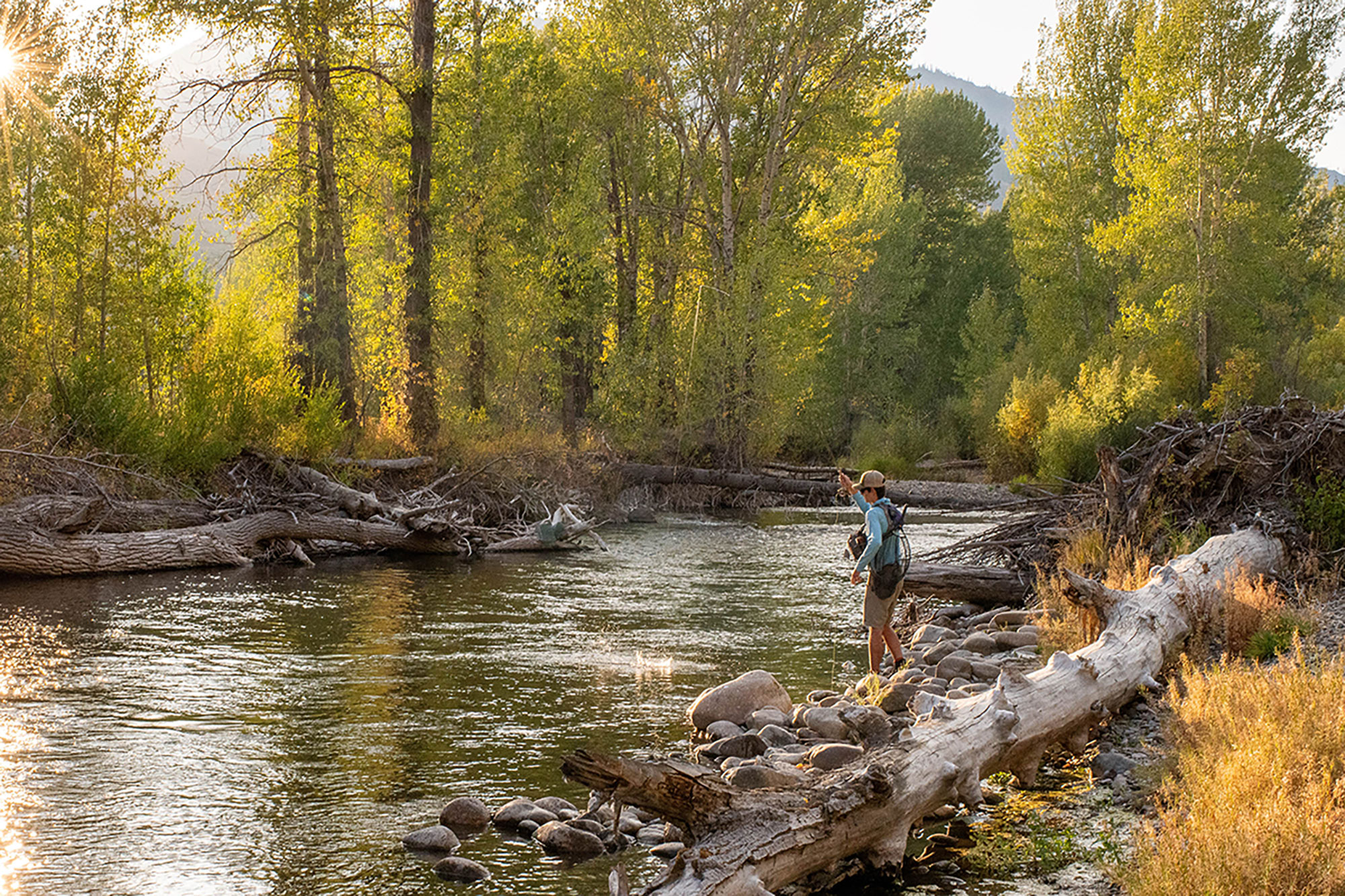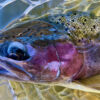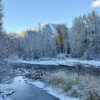“Days decrease, and autumn grows, autumn in everything.”
– Robert Browning
Autumn has left its mark: cooler water, shifting hatches, shorter windows. Autumnal angling is bittersweet as fish and fishers sense the urgency of the season.
Silver Creek
While fishing the Creek, expect to see typical fall bugs. The hatch timing depends on the day, so check the weather before you go. The late morning usually features a smattering of Tricos and Baetis, while afternoons have Baetis, Callibaetis, Mahogany Duns, and October Caddis. Terrestrials can work well in the wind, though fish are getting wary of hoppers. Ants and beetles are more reliable. Small Baetis nymphs and Zebra Midges are also effective. Remember, if you spot browns on redds, leave them alone.
Big Wood
The Hecuba (Red Quill), the last big bug of the season, are hatching from Mid Valley to Lake Creek. Even if you don’t see them, fish are keying in on them. Baetis (size 20) hatch in the afternoon, keeping fish feeding on the surface. If you notice splashy rises, check for small ginger-colored Crane Flies on the surface. On the lower Wood, flying ants are abundant; any size 16 ant pattern will do. Nymphing is also excellent. The best approach is to fish a high-floating dry, like a Parachute Ant, hopper, or Hecuba, with a small Baetis nymph or Zebra Midge (size 18 or 20) trailing behind.
South Fork of the Boise
Flows have dropped to around 300 CFS, making it ideal for wade fishing. Look for Flavs and fall Baetis during the day, and expect crane flies to skitter across the surface, often leading to aggressive takes. Evening caddis activity remains strong. If bugs are scarce, try a hopper. Nymphing will also be productive. Try a tandem rig, a stone or caddis larva as the anchor fly, paired with a smaller midge or mayfly imitation, when the action slows.
The Lost Below Mackay
Flows are dropping and are currently at 220 CFS. Once flows stabilize the fishing should be fantastic. As the morning chill fades, expect to see some Tricos and good numbers of Baetis through midday. Look for rising fish in seams and slow tail-outs; larger fish often group together during these feeding times. When the bugs disappear, be ready to nymph with small Baetis or midge patterns. Streamers are also effective.
Upper Big Lost
The Upper Lost is low and cold. Focus your efforts on the Main Stem from the North Fork confluence downstream, fishing from noon until the sun leaves the water. With low flows, fish are concentrated in the best spots, often one or two good fish per bucket, so make your first casts count. Expect to see decent numbers of Hecubas in the afternoon, and terrestrials are a reliable food source this time of year. Bring a mix of your favorite attractor dry flies, nymphs, and standard parachute patterns.
The Salmon
Stanley can be chilly in the morning, so there’s no need to start fishing until after 11 AM. When you hit the water, use nymphs or streamers in the seams and tail-outs. As the day warms up, fish will move into the shallow riffles. Hoppers and October caddis patterns will bring fish up to the surface.
Local Ponds
Lake Creek, Penny Lake, or Gaver’s Lagoon were stocked for the last time a few weeks ago. These are great places to help a youngster catch a fish with bait or have a fly fishing lesson.
Silver Creek: Beatis | Callibeatis | Mahogany Duns | Crane Flies | Zebra Midge in black, red, or olive | Small Pheasant Tails | October Caddis | Hoppers
Big Wood: Caddis | Red Quills | Hoppers | Rubber Legged Stones | Perdigones | King Prince | Streamers
Big Lost: Tricos | Crane Flies | Chubby Chernobyl | Rubber Legged Stones | King Prince | Streamers | Red Quills | Beatis
Salmon River: Chubby Chernobyl | Rubber Legged Stones | King Prince | Streamers | October Caddis | Hoppers
South Fork of the Boise: Zebra Midge | Caddis Larva | Flashback Pheasant Tails | Streamers | Flavs | Baetis | Crane Flies
| Silver Creek | 72.9 cfs |
| Big Wood | 150 cfs |
| The Lost Below Mackay | 218 cfs |
| Salmon | 801 cfs |
| South Fork of the Boise | 304 cfs |




